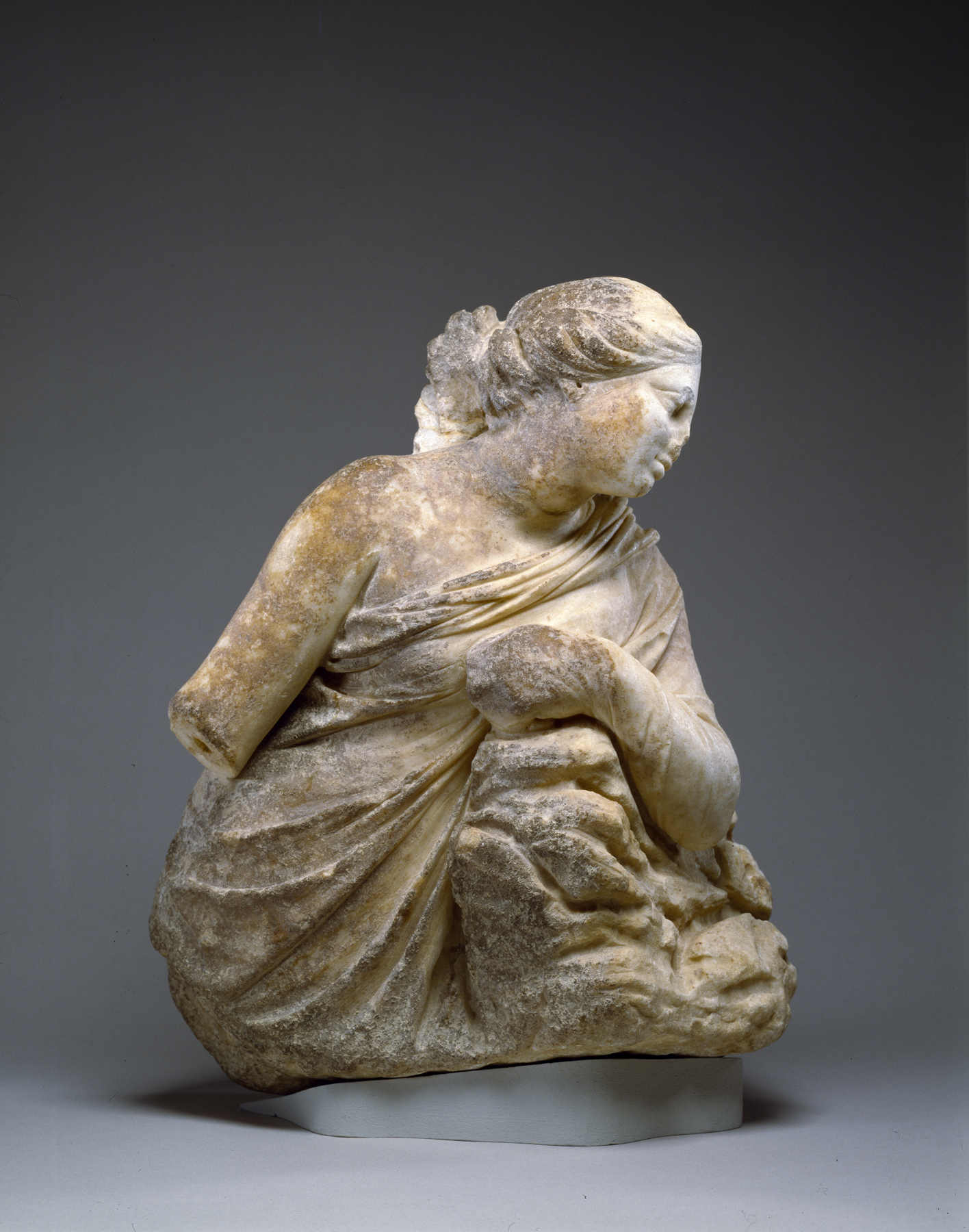Leaning Muse, Probably Polyhymnia
(Ancient Greece )
The original statue on which this figure is based no longer survives, but it inspired numerous Hellenistic and Roman copies that were placed in public and private gardens. Statues of the Muses also adorned the great scholarly complex in Alexandria known as the Mouseion, "Place of the Muses," which has given us the modern word "museum."
Provenance
Provenance (from the French provenir, 'to come from/forth') is the chronology of the ownership, custody, or location of a historical object. Learn more about provenance at the Walters.
Dr. B. and M. C. Collection Sale, Hôtel Drouot, Paris, 1910, no. 45, pl. 4; Madame Xav. Durighello Sale, Galerie Georges Petit, Paris, 12 June 1924, no. 15, pl. II; Dikran Kelekian, Paris and New York, 1927, [mode of acquisition unknown]; Henry Walters, Baltimore, 1927, by purchase; Walters Art Museum, 1931, by bequest.
Exhibitions
| 1988-1989 | From Alexander to Cleopatra: Greek Art of the Hellenistic Age. The Walters Art Gallery, Baltimore. |
Conservation
| Date | Description | Narrative |
|---|---|---|
| 2/11/1963 | Treatment | cleaned |
| 9/21/1977 | Treatment | cleaned; loss compensation; coated |
| 2/1/1988 | Treatment | cleaned; loss compensation |
Geographies
Greece (Place of Origin)
Measurements
13 5/16 x 10 3/8 x 8 in. (33.8 x 26.4 x 20.3 cm)
Credit Line
Acquired by Henry Walters, 1927
Location in Museum
Accession Number
In libraries, galleries, museums, and archives, an accession number is a unique identifier assigned to each object in the collection.
In libraries, galleries, museums, and archives, an accession number is a unique identifier assigned to each object in the collection.
23.90




